U.S. Department of Transportation
Federal Highway Administration
1200 New Jersey Avenue, SE
Washington, DC 20590
202-366-4000
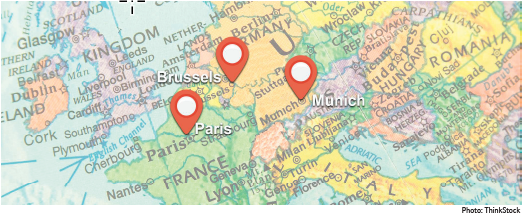
This study revealed insights on the reasons for successful shared-use mobility programs in the three cities visited. The findings fall under four main themes, which are elaborated upon in this chapter:
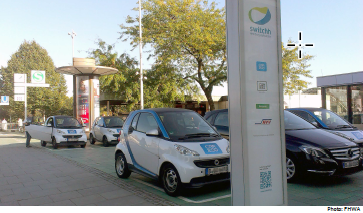
While public-private partnerships (P3s) in the United States and Europe share many common elements, European partnerships in public and private mobility services must often adhere to a more layered regulatory environment, including municipal, regional, country-specific and European Commission (EC) levels of oversight. While this multi-tiered regulatory environment can present challenges, it can also result in effective public-private partnerships with clear public benefit objectives and performance rules that meet long-range planning goals and other social objectives. The study team observed a collaborative approach both to developing and investing in cutting-edge shared mobility offerings and research and to creating innovative contracts that enable efficient and rapid scaling of successful shared-mobility services across both organizational and geopolitical boundaries.
Of particular note, the Polis Network, while not directly tied to the EU, is one of several nongovernmental networks of European cities and regions working together to develop innovative technologies and policies for local transport. Established in 1989 and with a secretariat based in Brussels, Polis supports the transfer of knowledge among European local and regional authorities, private transportation authorities, industry, research centers and universities, and engaged civic organizations. The network also formulates recommendations for European institutions.The remainder of this section provides examples of "boundary-defying" arrangements and entities that exemplify: 1) contracting provisions tied to specific public policy goals; 2) innovative governance models for shared mobility; and 3) funding shared mobility projects past the pilot or startup phase.
While the study team observed many noteworthy contracting provisions (most especially in Paris), a few from Milan, discussed in a wide ranging conference call with the city after returning from the European study tour, are provided here as good examples.
The City of Milan issued a variety of Requests for Proposal (RFPs) for shared mobility services, including one for one-way carsharing in 2013, as well as an updated carsharing RFP in 2016 that incentivized electric carsharing, and a variety of RFPs for scootersharing, dockless bikesharing, and quadricycles. These RFPs serve to both license shared mobility companies to operate in the city as well as incentivize operational models that best serve the public interest and mobility goals defined by the city. For example, the 2013 one-way carshare RFP called for carshare operators to fulfill the following requirements:
In 2016, the City of Milan revised its RFP, offering new incentives including free parking, higher vehicle caps, and user incentives to promote the success of carsharing. New regulations included:
Along with Milan's one-way carsharing licensing model, the city has been proactive in licensing emerging mobility services such as dockless bikeshare and electric (motor-powered) scooter-sharing. For example, Milan issued an RFP for dockless bikeshare, which brought two dockless companies, MoBike and ofo, to operate in the city. The city captures a €30 (or $32.50 in 2017 dollars) charge per dockless bike, and has restrictions on fleet size (1,000 – 4,000 bicycles) per operator.4
An example of an organization engaged in partnerships that cross both types of boundaries is the Paris region's state-owned public transportation company, Régie Autonome des Transports Parisiens (RATP). Established in 1949, RATP operates most of the public transport in the City of Paris and its surrounding Île-de-France region, including the Paris Metro, bus and tramway services, and part of the regional intercity train network. RATP is also the parent company of the RATP Group, comprising nearly 100 subsidiaries providing public transportation, engineering, and urban development and real estate services around the globe. RATP Group first expanded into the private sector in the early 2000s by becoming a minor stakeholder in the TransDev group and Veolia Transport. Following the merger of TransDev and Veolia, RATP acquired some of TransDev's international operations and then continued an expansion into the contracted delivery of public transit services and infrastructure, including the operation of bus, train, rapid transit, and inter-city rail services in cities throughout Europe, Asia, Africa and the United States.5
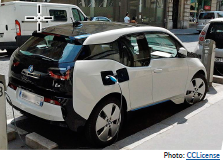
Another innovative governance model for shared mobility is represented by Paris's Metropole regional consortium, the public entity launched in 2011 to oversee the Autolib’ carsharing program, operated by Bolloré Group. This was in part a response to Paris's tough labor laws as well as to a legal requirement for public agency ownership and oversight.6 Municipalities can join the consortium on a membership basis, which allows smaller municipalities to gain access to the assets of Autolib’ and Vélib’, a bikesharing program, without their own proposal process. In 2016, following the selection of a new operator for the Vélib’ bikeshare system, Vélib’ was also incorporated into the joint consortium. The bikeshare system will now offer electric bikes within the 24,000-bike fleet, and Vélib’ is anticipated to expand to a total of 50 municipalities over the next few years.
Alongside this governance structure, Autolib’s contract with the City of Paris exemplifies how cities can support shared mobility systems through investment and risk sharing. When Autolib’ won the public contract, municipalities within the Parisian metropolitan region agreed to finance the electric vehicle charging infrastructure, which costs about €50,000 ($54,000 in 2017 dollars) per station, totaling a public investment of €50 million ($54.1 million in 2017 dollars) to match the Bolloré Group's €60 million ($65 million in 2017 dollars) investment.7 Over the 12-year lifespan of the contract, the Bolloré Group can only lose as much as €160 million ($173.3 million in 2017 dollars), with the government covering the rest of any potential losses. This support has helped Autolib’ remain operational when there have been financial challenges at many points of the program.8
Often these boundary-defying entities allow for a more sustainable revenue stream for shared mobility programs past the pilot or startup phase. Examples are given below from three major transport companies, which were a focus of this study, RATP in France, Deutsche Bahn in Germany, and Wiener Stadtwerke in Austria. Each demonstrates different approaches to developing and funding innovative mobility.
RATP Dev, a subsidiary for operations and maintenance within RATP, acts as an in-house venture fund that invests in different mobility services, often participating directly in the co-creation of startups in the shared mobility realm, including microtransit, integrated trip-planning apps, and shared autonomous vehicles.9 This model is almost the reverse of many U.S. P3s, as the public entity is providing the means for private entities to pursue innovative mobility solutions. In the process, RATP Dev is building and diversifying its own revenue streams while continuing to work in support of its public goals. Notably, the French government determined in 2016 that despite RATP being a public entity, its "engagement in gainful activities" makes it subject to many of the same corporate taxes as private entities; the company paid about €22 million ($23.8 million in 2017 dollars) in taxes that year.10
Another example of a "boundary-defying entity" is Deutsche Bahn Digital Ventures (DBDV), the corporate venture capital arm of Deutsche Bahn Group, Germany's largest railway company and leading mobility provider. With funds of €100 million ($108.3 million in 2017 dollars), DBDV launched in November 2016 with the goal of investing in start-ups with data-driven business models in the areas of mobility, logistics, Internet of Things (IoT), artificial intelligence, and big data.11 DBDV sources investments on a global basis with emphasis on Europe, the United States, and Israel. Funding is provided for start-ups from seed through the Series C stage (core focus being Series A), with additional possibilities for follow-on funding. An early investment includes Berlin ridesourcing company Talixo (€6 million ($6.5 million in 2017 dollars) investment in August 2017). Deutsche Bahn is also a partner in Berlin – and Munich-based electric on-demand door-to-door ridesharing service CleverShuttle and the multimodal travel application Qixxit. Alongside external investments, Deutsche Bahn Group is also focused on promoting intrapreneurship within the Group and collaborates with other industry partners on joint business development initiatives with the most promising start-ups in mobility and logistics on the unique, open-innovation platform Beyond 1435.
An entity similar to RATP and Deutsche Bahn is the holding company Wiener Stadtwerke GmbH in Austria, which through its subsidiaries offers municipal infrastructure services across the country and is one of the largest companies in Austria. Wiener Stadtwerke also owns Vienna's transport company, Wiener Linien. The company works closely with the City of Vienna to implement plans such as the Smart City Vienna Framework Strategy and the STEP 2025 urban mobility plan, which was passed in 2014. In line with these city plans, stakeholders outlined a strategic roadmap to transform the transport agency into a Mobility as Service (MaaS) provider. Wiener Linien looked to not only provide the "hardware"—i.e. the buses, trains, and paratransit vehicles—for public transportation service, but also the software required for the transport company to coordinate bundled mobility services for the city. Wiener Linien had successfully piloted a MaaS program called Vienna Smile from 2012-2014, which was funded by the Austrian government's Climate and Energy Fund. Wiener Stadtwerke created a private subsidiary called "Upstream – next level mobility GmbH," a private company responsible for the expansion and management of the WienMobil digital infrastructure, and to improve the digital services to strengthen Wiener Stadtwerke's position as a central integrator and contact for networked urban transport. This public-private partnership model allowed for the creation of a city-owned MaaS platform called WienMobil that launched in 2017.12
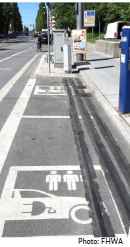
The European Commission's Energy Union identified the transition to an energy efficient, decarbonized transport sector as one of its key areas of action. The EC Energy Union provides a comprehensive vision for all member countries within the European Union. Initiatives such as HORIZON 2020, the 2013 Urban Mobility Package, and the Climate and Energy Policy Framework 2030 all support this low-carbon mission and inject funding into cities, regions, and countries to address specific goals, such as vehicle electrification and greenhouse gas reductions, and to encourage lower-emission transport modes. Although the EC has limited ability to enforce its policies, the EC employs a general strategy of publicly prodding city and federal governments that are falling behind in meeting sustainability objectives, including those related to reducing the climate impacts of transportation, and promoting bikesharing, carsharing and carpooling, and rapid electrification of personal and shared cars.
Physical infrastructure plays an important role in supporting the launch and growth of shared mobility. Features such as bike lanes, on-street carshare parking spaces, and electric vehicle (EV) charging hubs are crucial to making shared mobility services highly visible, easily accessible, and reasonably safe and convenient. In many cases, such infrastructure requires well-defined partnerships between public and private sector entities. Both sectors can benefit from shared infrastructure, but reasonable steps must also be taken to ensure that burdens and risks are shared and that the public good and shared mobility systems are well served. The team was particularly impressed by the integrated mobility hubs and EV charging networks it encountered as well as the factors behind these successes, as described in the following section.

Pioneered in Bremen, Germany, mobility hubs provide physical integration among modes by co-locating carsharing, bikesharing, and other shared-mobility services at or near public transit stops. Mobility hubs can also feature bike parking, dedicated curb space for taxis and ridesourcing providers, and wayfinding and place-making elements. Capital costs are often funded through a mix of public and private sources, with public entities financing the projects as a whole, but with individual mobility providers being responsible for their own infrastructure and operating costs and paying rental costs that go toward maintenance of the sites.13
Mobility hubs may also have an attendant or a digital kiosk to help passengers access information about the various modes offered. With their physical presence, these hubs can help to increase the visibility of and access to shared mobility services. Recent findings also indicate that mobility hubs can help increase the use of shared mobility.14 Germany, Austria, Switzerland, and Italy have mobility hubs, and the concept is one that other cities are eager to adopt, including U.S. municipalities such as Los Angeles and Kansas City.
The study team visited the Münchner Freiheit mobility hub while in Munich and met with mobility hub experts at the Technical University of Munich (TUM). TUM conducted a survey of mobility hub users in June 2016, finding that 67 percent are public transit subscribers (i.e., maintain a weekly, monthly, or yearly transit pass), about one-third have no car, the majority walk to access carsharing vehicles or bikes at the hubs, and many see potential for more multimodality to help reduce car ownership.15 Munich is working to increase the visibility of its mobility hub with better branding and more visible colors. The city is also exploring a way to offer "mobility packages" that would feature fare integration and, in the summer of 2017, added cargo bikes for a trial period. These cargo bikes can be used by residents as well as delivery services such as UPS and DHL for last-mile delivery.
While in Munich, the study team also visited Domagkpark, a new residential development. Domagkpark includes approximately 1,600 apartments and is connected to the Münchner Freiheit by tram line. It was also designed as a "living lab" for sustainable mobility solutions and features a private "residential mobility hub" available to residents. The hub includes e-bikes, e-scooters, cargo bikes, and electric carshare cars available for use by residents and the general public. Members of the mobility station also receive discounted transit passes and, at move-in, information about the variety of available transportation options.
Other European mobility hub sites the team learned about include:
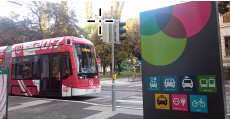
Extensive and reliable EV charging networks are necessary to accelerate EV adoption. They can, however, be costly and time consuming to install and maintain, and they require significant cooperation between public and private entities. Sharing infrastructure between owners of personal EVs and carsharing providers can help to support EV charging networks by providing the user revenue necessary to keep charging ports in good working order. In some cases, EV charging stations can also be co-financed by shared mobility providers and electric utility companies. The study team discussed the issue of EV charging networks with several contacts in Europe, including representatives from the Autolib’ carsharing system in Paris and BMW in Munich.
In Paris, the city decided to make all of the charging stations for its one-way EV carshare system available to the public and to price its public usage higher than for carshare vehicles, which helps to provide additional revenue for the system. In an interview, Autolib’ told the study team that public use of the charging network has been increasingly popular despite the high prices and limited availability and helps subsidize shared services.
BMW has charging networks in 11 cities in seven different countries. Approximately 16 percent of BMW's DriveNow carsharing fleet is electric, and the company has charging infrastructure access agreements in place with several cities. For instance, in Copenhagen, DriveNow users can access municipal charging stations, and approximately 75 percent of charging station use there is by carshare users (which is higher than usual). The City of Copenhagen has responded by working closely with DriveNow and is following its recommendations when siting new charging stations.
Elsewhere in Europe, the City of Amsterdam has made special citywide parking permits available for electric carsharing fleets. Amsterdam has more than 500 EV charging stations and plans to eventually grow the network to 2,000 stations. All car2go vehicles in Amsterdam are 100 percent electric and can be parked at any public charging station in the city without the driver incurring additional fees. Other notable EV carsharing systems include:
In many European cities, multimodal travel is a way of life that is backed by a strong public- sector commitment. European residents often engage in walking, bicycling, and other forms of active transportation to meet their day-to-day travel needs. At the heart of Europe's mobility mix lies an extensive public transportation system—including buses, trams, trains and high-speed national railways—that provides fast and convenient access within and between cities throughout the continent.
European transportation agencies and regional and local governments often view shared mobility as a way to expand the geographic and temporal range of transit service. European entities make few distinctions between how to manage public and private sector participants in transportation. Government rules apply regardless of the provider. Transit agencies frequently add carsharing and bikesharing to their fleets, for instance, and bundle options as part of their full-service approach.
To support these robust networks of mobility choices and encourage further multimodal travel, European governments, transit agencies, and private-sector mobility providers have focused for years on ways to improve multimodality, or the ability to combine different modes of transportation in a seamless travel experience, through more closely aligned public and private transportation services. These efforts include developing integrated fare payment solutions that combine multiple systems on a single smart card or mobile app (an approach that several U.S. metropolitan areas have also begun pursuing in recent years), as well as coordinated marketing and co-location of carshare cars and bikeshare bikes at mobility hubs along train lines.
In recent years, public and private-sector transportation stakeholders have become increasingly interested in developing new payment technologies that can link intermodal trips across operators using a single, easy-to-use payment platform. Multimodal payment integration has been instituted in transit agencies across Europe, including in Switzerland, Germany, the Netherlands, Finland, Italy, Austria, and Belgium. Switzerland in particular is a leader in this domain, with carsharing, bikesharing, and the entire country's transit system all accessible through the Swiss Pass fare card. Some of these early advances have also formed the basis for the Mobility as a Service concept and have helped to set the stage for further advancements.24 Additionally, technology companies such as moovel Group (a subsidiary of Daimler), Siemens, Xerox, and Cubic are currently working with cities in Europe and around the world to pursue new advances in digital ticketing and payment, real-time travel information, and trip planning.
Key European fare integration programs observed or discussed as part of the study include:
Many of these integrated payment systems are paired with infrastructure that facilitates multimodality, such as Munich's downtown mobility hub, the Navigo Pass's Veligo bike-and-ride program in Paris, and in all three study cities (Brussels, Munich, and Paris) the co-location of carsharing and bikesharing at transit stations. In Belgium, the successful Cambio carshare has become well integrated with the public transit system across the larger metropolitan region, and many of the carshare stations are along transit lines and are featured on transit maps. Pairing integrated payment and shared infrastructure can help to increase visibility and access to shared mobility services.
In addition to integrated payment smartcards and applications, MaaS is a concept that emerged in Europe and has begun to be adopted elsewhere in the world. MaaS can be defined as "a mobility distribution model in which a customer's major transportation needs are met through a single interface."31 MaaS has the potential to integrate several public and private mobility solutions together on the same platform, offering users a menu of options that fit a variety of travel needs. Due to the high profile of MaaS in Europe, many governments and transit agencies are pursuing such programs, either by launching MaaS pilots of their own or by creating regulatory environments that support the growth of market-driven MaaS solutions. While the subject of MaaS came up often during discussions in Europe, it was not a focus of this study generally, or of any of the meetings, due in part to time and budget constraints. The study team believes that European MaaS innovations would be very worthy of further examination.
In many European cities, a general orientation toward multimodal lifestyles has set the stage for the successful deployment of transportation demand management (TDM), or the application of strategies and policies to anticipate, reduce, and distribute travel demand and change consumer travel behavior.32 Unlike the United States, where TDM is often regionally or municipally focused and has little State or Federal collaboration, European initiatives such as Share North, CIVITAS, Polis, UITP, and Taxistop have funded TDM research and pilots across the continent.
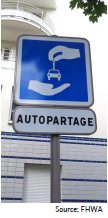
When mobility policies are adopted in Europe, they tend to be very comprehensive and focus on regional solutions, as illustrated by the treatment of parking. That a parking space should be available to urban dwellers is a less common assumption in Europe than in the United States (although a reluctance to adequately price preexisting on-street residential parking remains on both continents). For example, the regional government in Brussels has created a parking policy framework and, while municipalities can adjust it, if the municipalities cannot reach consensus, the regional government can dictate what happens. Other examples include Oslo, which has set goals to eliminate all parking within its city center, and Germany, which has new federal legislation governing carsharing. The new law, "Carsharing-Gesetz" (CsgG), took effect in September 2017 and includes preferential treatment of carsharing for street parking. Brussels decided to constrain parking to force innovative alternative mobility solutions, so the city established an environmental tax on parking spots beyond a maximum level, subject to a 10 percent annual increase for 15 years starting in 2014.33
Milan, another city of interest for this study, created a congestion charge in what it calls "Area C" in the historic core of the city,34 and is going to put in place a Low Emission Zone that covers the vast majority of the municipal territory. The congestion charge is applied to every vehicle entering the city center, except electric and hybrid vehicles, scooters, carsharing, public transit, police and emergency vehicles, on weekdays from 7:30 am to 7:30 pm (on Thursdays the operation is limited to 6 pm). The city therefore has incentivized electric-vehicle usage in Area C through providing free access for electric and hybrid vehicles. Through a series of regulations passed by city council in 2013 and 2016, carshare and scooter-sharing vehicles are also given free access and parking spaces in Area C. The city has seen a major decrease in congestion within Area C (31% decrease)35 and a reduction in city-wide vehicle ownership, with the number of cars reduced from 58 to 50.5 per 100 inhabitants.36
In the United States, planning for shared mobility and active transportation occurs across a patchwork of agencies and planning organizations. Locally, transit agencies and metropolitan planning organizations (MPOs) develop long-range transportation plans, while State departments of transportation develop similar statewide plans.37 In Europe, a more nuanced and redundant planning structure exists for sustainable mobility planning, with collaborative efforts across the EC, EC-funded initiatives, and membership bodies, such as the Polis Network (discussed earlier), which all contribute to establishing a comprehensive ecosystem of funding, research, and planning dedicated to sustainable mobility that is harmonized across many jurisdictional levels.
Although urban mobility is normally seen as a regional or local issue, rather than a European-wide level policy matter, there has been much cooperation at the EU level. The European Commission's roles are three-fold: 1) providing EU-wide regulations (e.g., of products or data) that affect products and services that are part of urban mobility; 2) funding European research and innovation programs to create scale and cooperation on common challenges, including with academic and industry partners; and 3) European-level exchange of best practices, guidelines, and information about common challenges. The EC financially supports initiatives like CIVITAS (an acronym for CIty-VITAlity-Sustainability) for research and innovation in urban mobility.
The EC's Mobility and Transport Division works closely on urban mobility issues with networks such as the International Association of Public Transport (UITP), the Polis Network, and the European Platform on Mobility Management (EPOMM). This broad set of actions has helped provide support for European cities working to encourage broad adoption of multimodal behavior. Several of these key programs and their associated funding streams are described in greater detail in the funding section of Chapter 4.
A key focus of the EC's efforts on urban mobility is the Sustainable Urban Mobility Plan (SUMP) Framework, which is tied to different tiers of implementation funding in order to incentivize planning.38 These SUMPs contribute to energy and emissions goals in key policy documents, including the EC's Action Plan on Urban Mobility (2009) and Transport White Paper (2011), which help to guide transportation policy in the European Union. The SUMP Framework sets a new paradigm for transportation planning by reorienting focus from the traditional traffic flow capacity and speed metrics to people-focused metrics such as quality of life, economic viability, and social equity.39
In the European cities visited by the study team, both long– and short-range plans are directly tied to funding streams and are very comprehensive in guiding development of new services. In Munich alone, projects funded by the CIVITAS ECCENTRIC program (an EC initiative focused on sustainable mobility in lower density areas) include the Domagkpark residential mobility hub, a MaaS application visited by the study team that includes a cargo-bikesharing pilot for e-commerce last-mile delivery, electric mobility options at the mobility hub, and an electric bikeshare fleet for the MVG-Rad municipal bikeshare system.40 Specific goals identified in Munich's long-range plans—including lower greenhouse gas emissions, reduced vehicular traffic, and integration of residential development with innovative mobility services—are broken down into granular implementation plans that are addressed through ECCENTRIC's "Living Laboratory" funding for Munich through 2020.41
Cities are assessing the scope and scale of new services needed and then issuing requests for proposals to fill those needs. In addition, specific plans tied to greenhouse gas emission reduction goals have led to greater emphasis on pedestrians, bicycles, and multimodal transportation.
The European Platform for Mobility Management (EPOMM) provides an online mapping tool called TEMS ("The EPOMMS Modal Split" tool) that displays mode split data from 487 cities in Europe.42 TEMS provides longitudinal data on each city's mode split, which is useful for understanding how demand and the modal mix of each city evolves over time. The EC's DGMOVE also has a flagship annual campaign called "European Mobility Week," where more than 2,000 European cities participate to promote sustainable urban mobility through such activities as hosting a car-free day and marketing active and sustainable transportation options.
The study team observed a host of creative and widely applied TDM strategies. These include:
In Munich, the city implements a variety of TDM strategies, including highly personalized "multimodal mobility consulting" that provides new residents with information on mobility options and a phone conference to assess particular mobility needs and feedback on customer experience. Munich has a full-time Coordinator for Mobility Management43 to lead this program, along with other mobility management initiatives. The city government—in partnership with the transit agency (MVG), the regional ticketing authority (MVV), and a variety of shared mobility providers—developed this program to address barriers to sustainable mobility through providing information, consulting, and incentives to encourage people to adopt more sustainable travel behavior.
The five main areas of Munich's intermodal mobility consulting program include:
Within this mobility consulting strategy, the city established a "control board for mobility management," which consists of city government leaders, CEOs of the local transportation companies, and the MVV. This control board sets the overall strategy for the program and responds to all feedback. Although the mobility marketing concept has been used in the context of TDM programs before, the comprehensive and well-integrated nature of this program within the operational structure of the transit agency and transportation companies in Munich makes it a uniquely innovative program.
Other municipally led TDM approaches include:
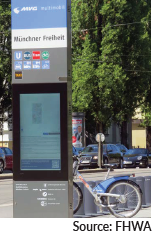
Many European cities, including Paris and Brussels, are beginning to mandate mobility plans for businesses with 100 employees or more (which is also seen in the United States, but without great frequency and only in a few states). Recent French legislation46 requires Parisian businesses to develop mobility plans with goals for reducing greenhouse gas emissions, offering new sustainable mobility options, and analyzing commuter travel behavior. The businesses have to develop a program that includes specific TDM measures, a financing plan, and a timetable for implementation. IDF Mobilités oversees the program and has developed an online toolkit and resource library to guide businesses developing action plans.47 Additionally, many companies in Paris offer employees a 50 percent discount for the Navigo pass and are no longer obliged to build parking at their office buildings. Companies must also pay the equivalent of 1-2 percent of each employee's salary in taxes for public transportation.
Brussels has new regulations for employer mobility plans that went into effect at the beginning of 201848 and is working to shift away from its car-focused paradigm. Until recently, it had been common for companies to provide cars that employees can use to commute to work each day. The new regulations require companies to offer two additional options alongside the offer of a company car: the first is a more economical vehicle with a bikeshare or train subscription, and the second is a "mobility package" that includes subsidized rates for services including carsharing, bikesharing, and taxis.
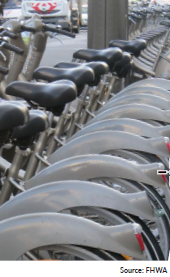
In Munich, the study team was able to see how the transit system had been developed beyond the traditional city limits prior to allowing housing development, and then, how housing was carefully planned to be within walking distance of the new transit stops. Within the city, dense infill development is encouraged along major rail and tram lines. In reviewing new development, the city's planning guidelines direct that 80 percent of the population and jobs should be within walking distance of quality transit service.49
In Paris, the $35 billion Grand Paris Express Metro project—a group of new rapid transit lines being built across the Île-de-France region—is being paired with vast improvements in the bike lane network across the city, and bikesharing has been designed to extend transit lines and provide first/last mile connections. Paris also has a plan to constrain private car parking that will be implemented beginning in 2020.
In Italy, Milan decided it wanted to have a comprehensive shared mobility system. The city defined the quality and number of services that it thought appropriate for its geography and density, and then had a public tender to attract providers using a "licensing" model, an approach currently undergoing trial in U.S. cities like Seattle (for free-floating carsharing50 and dockless bikesharing51) and San Francisco (for private shuttles and microtransit vehicles 52). Munich has also worked extensively with the private sector, including partnering with BMW, to establish expectations around shared mobility. However, Munich's shared mobility services have been largely led by private automobile companies, and there has been less public guidance and regulation compared to a city like Milan, which was discussed earlier.
Milan's efforts to create a supportive regulatory environment for shared mobility has paid off—the city boasts six one-way carsharing operators, a total fleet of 3,394 vehicles (28 percent of which are all-electric), with 743,000 users, a total of 4,650 dock-based (electric-assist and traditional) bicycles, 12,000 dockless bikeshare bikes, and 200 shared scooters.

4 Comune di Milano, "Observatorio Sharing Mobility." PowerPoint Presentation, November 15, 2017. [ Return to note 4. ]
5 RATP Group, Financial and CSR Report 2016, n.d. Available at: https://www.ratpdev.com/sites/default/files/annexes/communiques/ratp_1703145_ra_financier_gb_mel_0.pdf. [ Return to note 5. ]
6 Autolib’ Vélib’ Métropole, "Qui Sommes Nous?" n.d. Available at: https://autolibmetropole.fr/autolib-metropole/qui-sommes-nous/. [ Return to note 6. ]
7 Eltis, "Bolloré wins Autolib’ contract in Paris (France)," last modified August 1, 2014, available at: http://www.eltis.org/discover/news/bollore-wins-autolib-contract-paris-france-0. [ Return to note 7. ]
8 N. Loucet and G. Jacquemain, "Autolib’ is still not profitable and perhaps it will never be," January 20, 2017. Available at: https://6t.fr/en/autolib-not-profitable/. [ Return to note 8. ]
9 RATP Dev, "Innovative mobility" web page, n.d. Available at: https://www.ratpdev.com/index.php/en/commitments/innovative-mobility. [ Return to note 9. ]
10 RATP Group, Financial and CSR Report 2016, n.d. Available at: https://www.ratp.fr/sites/default/files/inline-files/ratp_1703145_ra_financier_gb_mel.pdf. [ Return to note 10. ]
11 Crunchbase, "Deutsche Bahn Digital Ventures GmbH" web page, n.d. Available at: https://www.crunchbase.com/organization/deutsche-bahn-digital-ventures. [ Return to note 11. ]
12 For more information on the WienMobil platform, see the section on Progressive Transit Agency Leadership with a Vision for Shared Mobility Connectivity. [ Return to note 12. ]
13 Werkstatt-Stadt, "Car sharing stations in public street space," last modified June 1, 2010, available at: https://www.nationale-stadtentwicklungspolitik.de/NSP/DE/Werkstatt-Stadt/werkstattStadt_node.html. [ Return to note 13. ]
14 Miramontes, M., Pfertner, M., Rayaprolu, H. et al. (2017). "Impacts of a multimodal mobility service on travel behavior and preferences: user insights from Munich's first Mobility Station." Transportation 44(6) 1325-1342. 10.1007/s11116-017-9806-y. [ Return to note 14. ]
15 Ibid. [ Return to note 15. ]
16 Maximilian Pfertner (2017). "Evaluation of Mobility Stations in Würzburg - perceptions, awareness, and effects on travel behavior, car ownership, and CO2 emissions." Master's Thesis, Technical University of Munich. p. 15. [ Return to note 16. ]
17 Eva Heller (2016). "Evaluation of Mobility Stations in Offenburg: Assessment of Perception and Acceptance of an integrated Multimodal Mobility Service and Potential Changes on Mobility Behavior." Master's Thesis, Technical University of Munich. [ Return to note 17. ]
18 Pfertner (2017). "Evaluation of Mobility Stations in Würzburg." pp. 24-28. [ Return to note 18. ]
19 Heller (2016), "Evaluation of Mobility Stations in Offenburg," p. 17. [ Return to note 19. ]
20 For additional information on Leipzig mobil, visit: https://www.l.de/verkehrsbetriebe/produkte/leipzig-mobil. [ Return to note 20. ]
21 M. Kane, "Bolloré To Launch Car Sharing In Rome & Turin," Insideevs, n.d. Available at: https://insideevs.com/bollore-launch-car-sharing-rome-turin/. [ Return to note 21. ]
22 R. Boagey, "Bluecity to spread electric fleet across London," Business Car, November 6, 2017. Available at: http://www.businesscar.co.uk/analysis/2017/bluecity-to-spread-electric-fleet-across-london. [ Return to note 22. ]
23 Carol Coolsaet, "Toyota's i-ROAD half way through Cité Lib by Ha:mo trial," Toyota Europe (blog), June 10, 2016, available at: https://blog.toyota.eu/green/toyota-iroad-cite-lib-by-hamo-trial/ [ Return to note 23. ]
24 For more information, see the section titled "Mobility as a Service" in the desk review. [ Return to note 24. ]
25 MVG, "MVG more," n.d., available at: https://www.mvg.de/services/mobile-services/mvg-more.html. [ Return to note 25. ]
26 Belgian Rail, "Don't have a MOBIB card yet?" n.d., available at: http://www.belgianrail.be/en/travel-tickets/mobib/no-mobib.aspx. [ Return to note 26. ]
27 Mobility Mixx, n.d., https://mobilitymixx.nl/home.html. [ Return to note 27. ]
28 The Navigo pass currently does not offer payment integration across Autolib’ and Vélib’, however. [ Return to note 28. ]
29 Transform: Transformation Agenda for Low-Carbon Cities, "SMILE Project in Vienna," February 9, 2011. Available at: http://smile-einfachmobil.at/index_en.html. [ Return to note 29. ]
30 Wiener Linien, "WienMobil." [ Return to note 30. ]
31 S. Hietanen (2014). "'Mobility as a Service' – the new transport model?" Eurotransport Supplement: ITS & Transport Management 12(2), pp. 2–4. [ Return to note 31. ]
32 Mobility Lab, "What is TDM?" n.d. Available at: https://mobilitylab.org/about-us/what-is-tdm/. [ Return to note 32. ]
33 Loyens Loeff, "The Legal Consequences of Owning Too Many Parking Spaces in Brussels," 2017. Available at: https://www.loyensloeff.be/en/news/the-legal-consequences-of-owning-too-many-parking-spaces-in-brussels/. [ Return to note 33. ]
34 Urban Access Regulations in Europe, European Commission, "Milano Area C: Low Emission Zone & Charging Scheme," n.d. Available at: http://urbanaccessregulations.eu/countries-mainmenu-147/italy-mainmenu-81/lombardia/milan-ecopass. [ Return to note 34. ]
35 EuroCities, "Area C: Milan's congestion charge zone," September 2013. Available at: http://nws.eurocities.eu/MediaShell/media/Sep_Cities in action_Milan_AreaC.pdf [ Return to note 35. ]
36 Marco Bedogni, "Air Quality: Urban Transport Measures in the City of Milan." PowerPoint Presentation, dated September 12, 2016. Available at: https://www.polisnetwork.eu/uploads/ModuleXtender/PublicEvents/401/7._Bedogni_-_Air_quality_in_Milan.pdf [ Return to note 36. ]
37 U.S. Department of Transportation, Federal Transit Administration, "Metropolitan, Statewide & Non-Metropolitan Planning Fact Sheet (Sections 5303-5304-5305)," n.d., Available at: https://www.transit.dot.gov/regulations-and-guidance/transportation-planning/metropolitan-statewide-non-metropolitan-planning-0. [ Return to note 37. ]
38 European Commission, Mobility and Transport, "Sustainable Urban Mobility Plans," n.d. Available at: https://ec.europa.eu/transport/themes/urban/urban_mobility/urban_mobility_actions/sump_en. [ Return to note 38. ]
39 European Commission, European Platform on Sustainable Urban Mobility Plans, "Guidelines for developing and implementing a sustainable urban mobility plan," 2013. Available at: http://www.eltis.org/sites/default/files/guidelines-developing-and-implementing-a-sump_final_web_jan2014b.pdf. [ Return to note 39. ]
40 European Union, The Civitas Initiative, "Exploring innovative urban mobility solutions," n.d. Available at: https://civitas.eu/mobility-measures?title=&field_city_for_measure_target_id=38987. [ Return to note 40. ]
41 European Union, The Civitas Initiative, "Munich," n.d. Available at: https://civitas.eu/fr/eccentric/munich. [ Return to note 41. ]
42 EPOMM web page: http://www.epomm.eu/index.php. [ Return to note 42. ]
43 This role is currently held by Martin Schreiner in Munich. For more on his role, see the Political and Other Leadership section in Chapter 4. [ Return to note 43. ]
44 M. Schreiner and R. Knäusl, "Never walk alone! Processes, results and purposes of an innovative and successful mobility partnership in Munich," Epomm, 2004. Available at: http://epomm.eu/ecomm2004/workshops/anglais/Schreiner.pdf. [ Return to note 44. ]
45 Pro Mobilite, n.d., http://www.promobilite.fr/ [ Return to note 45. ]
46 Article 51 of the Energy Growth Transition Act for Green Growth passed on August 17, 2015 which went into effect on January 1, 2018. For more information, see https://www.gouvernement.fr/en/energy-transition. [ Return to note 46. ]
47 Pro Mobilite, n.d. Available at: http://www.promobilite.fr/. [ Return to note 47. ]
48 The regulation was announced in June 2017 and went into effect in January 2018. Available at: https://www.thebulletin.be/brussels-government-approves-new-mobility-plan-companies. [ Return to note 48. ]
49 Landeshauptstadt München, Referat für Stadtplanung und Bauordnung, "Nahverkehrsplan der Landeshauptstadt München," July, 2005. Available at: https://www.muenchen.de/rathaus/dam/jcr:f9a570d9-2fe7-4985-9528-f6d69ea1d8e9/Nahverkehrsplan.pdf. [ Return to note 49. ]
50 Norm Mah, "Seattle Car Share Program Update," Seattle Department of Transportation (Blog), March 4, 2016. Available at: http://sdotblog.seattle.gov/2016/03/04/seattle-car-share-program-update/. [ Return to note 50. ]
51 Josh Cohen, "Seattle Test Will Lead to Regulating Dockless Bike-Share," Next City, December 21, 2017. Available at: https://nextcity.org/daily/entry/seattle-dockless-bikeshare-pilot-regulation. [ Return to note 51. ]
52 San Francisco Municipal Transportation, "Private Transit Vehicle Permitting," October 17, 2017. Available at: https://www.sfmta.com/projects/private-transit-vehicle-permitting. [ Return to note 52. ]